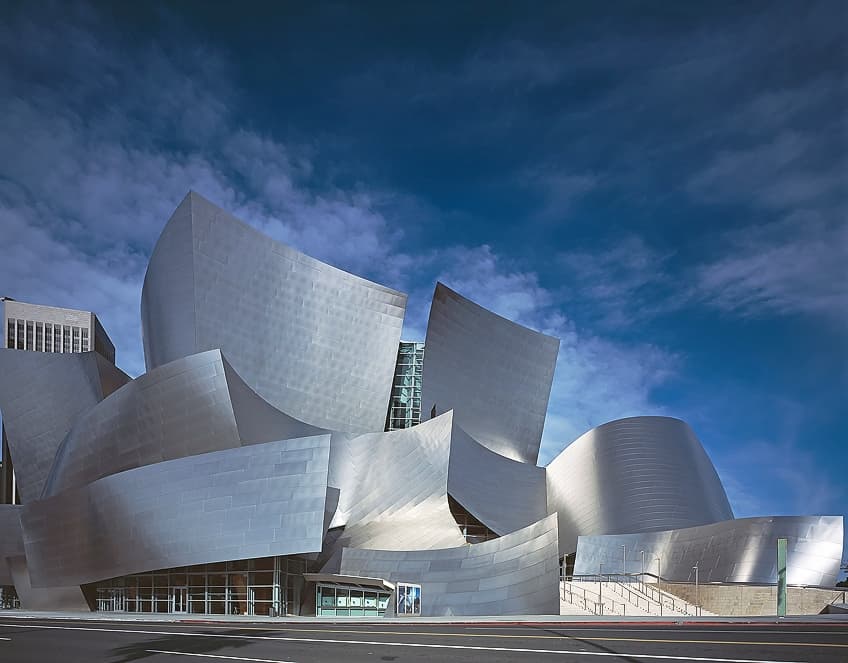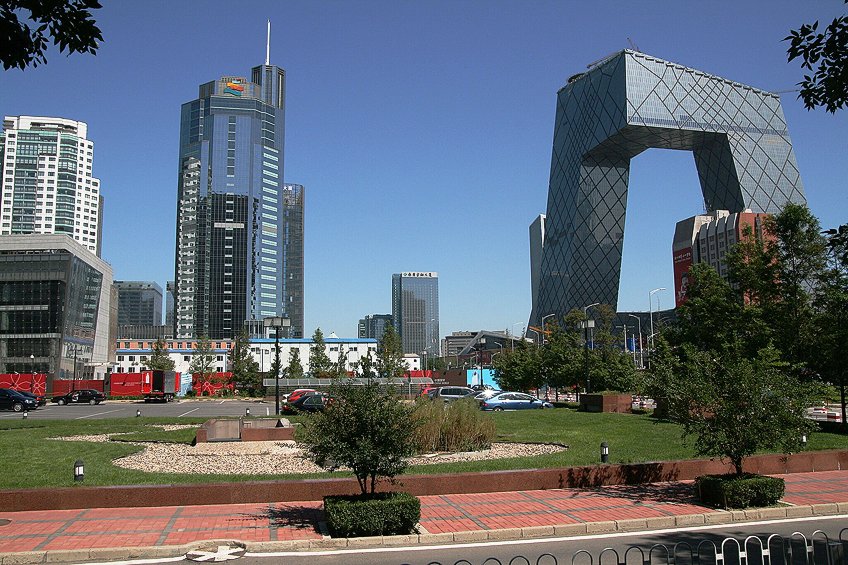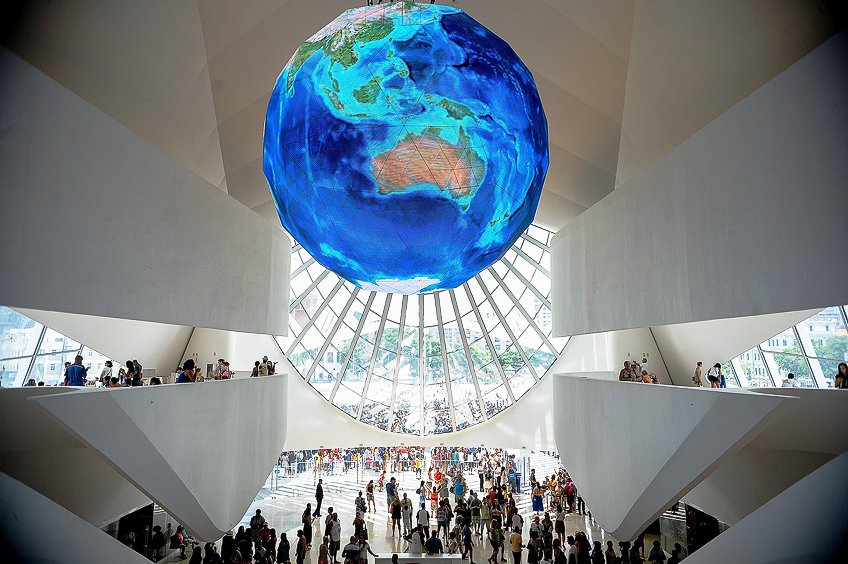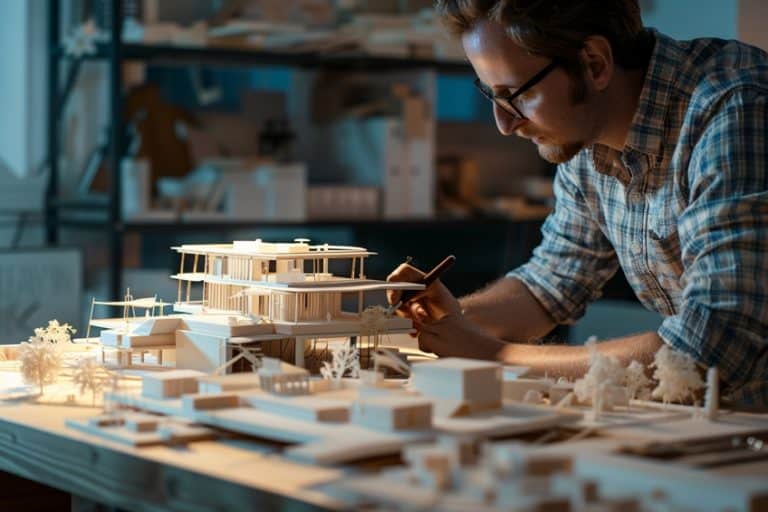Famous Modern Architects – 15 Contemporary Masters in Design
There have been architects for as long as there have been buildings. However, we often tend to focus on architects who are long gone. We look retrospectively at those who have passed to see their contributions to the world, but sometimes it can be very beneficial to look to the present. That is what we are going to do today as we have a look at a list of contemporary architects. This list of fifteen architects includes some of the most famous architects currently alive. Some are very old, and others are not all that old at all, but their work has already become influential. So, let’s have a look at some of the most famous modern architects.
Famous Modern Architects
Before we get started on this list of famous modern architects, we should clarify a few things. Firstly, it should be noted that we are only going to be looking at contemporary architects who are still alive at the time of writing. There certainly are contemporary architects, such as Zaha Hadid, who were taken far too young, but these architects will not be the focus of today. In addition, when we use the terms “modern architecture” and “modern architect” today, we are generally using them as a synonym for “contemporary”. If we wish to discuss Modernist architecture, we will use that term rather than “modern architecture”.
With these few small things out of the way, let’s have a look at some of the most influential contemporary architects producing modern architecture in the present day.
Frank Gehry (1929 – Present) from Toronto
| Architectural Style | Postmodern architecture |
| Years | 1929 – Present |
| Place of Birth | Toronto, Canada |
| Known For |
|
Frank Gehry is typically considered to be one of the most famous modern architects. His work has come to be seen as some of the most bizarre and unusual because of its highly irregular design that flies in the face of many of the supposed rules of architecture. His work, which is often described as Deconstructivist, although he tends to reject the label, makes use of designs that incorporate disjointed and geometrically abstract shapes.

His work essentially looks like what many perceive modern art to look like. Shapes jutting out in odd directions, strange materials, a lot of curves, and highly experimental presentation. His work has also been criticized for its refusal to adhere to the basic rules of architecture and for often being the architecture of the immensely wealthy. The buildings that he designs are expensive and extravagant, and they are far from anything that would be considered inspired by Classical works.
Denise Scott Brown (1931 – Present) from Nkana
| Architectural Style | Postmodern architecture |
| Years | 1931 – Present |
| Place of Birth | Nkana, Zambia |
| Known For |
|
Denise Scott Brown is an architect whose name is often pushed to the side to instead focus on her husband, Robert Venturi. However, while this does often happen, she remains one of the most influential architects of the 20th century and an integral figure in the development of Postmodern architecture. Her work with the firm Venturi, Scott Brown and Associates aided in solidifying her place as one of the most consequential of all contemporary architects in the world.

The works that she and her husband produced, which were often influenced by one another, were considered to be some of the most boundary-pushing of all modern architecture. In addition to producing famous buildings, their 1972 book Learning from Las Vegas is seen as one of the texts that spurned on the development of Postmodern architecture after rejecting many of the minimalist restraints that were still retained by those clinging to the Modernist tradition.
Norman Foster (1935 – Present) from Reddish
| Architectural Style | High-Tech architecture |
| Years | 1935 – Present |
| Place of Birth | Reddish, United Kingdom |
| Known For |
|
Norman Foster is one of the best-known architects in the world as well as being one of the richest. He is most associated with a strain of contemporary architecture known as High-tech architecture, and this form is noted for its prolific use of cutting-edge materials and designs. This has aided in spurning on many fantastic developments in architecture that may have otherwise taken far longer to be adopted into the latest structures.

Alongside his firm, Foster + Partners, he has become one of the richest architects in the world and his fame and influence led to him attaining peerage in the United Kingdom. He was made into Baron Foster of Thames Bank and is therefore a baron. His work has continued into the present day, and he has received numerous honors for his contributions to architecture as a whole and for the use of many modern materials in his structures.
Renzo Piano (1937 – Present) from Genoa
| Architectural Style | High-Tech architecture |
| Years | 1937 – Present |
| Place of Birth | Genoa, Italy |
| Known For |
|
Renzo Piano is an Italian architect who is often best known for his design and development of public spaces. He is typically associated with High-tech architecture, and he aided in the design of many public spaces following this general trend, but his work has also often been described as Postmodernist. Many of the designs for which he is known use technologically advanced designs and modern materials that are intended to create lightweight and monumental structures. Many of the designs he has become well-known for are seen as blending traditional architecture with engineering sensibilities while taking the environment into account.
His work is also typically seen as futuristic in its implementation and a stunning example of the kind of work that will likely only become more prevalent in the coming years.

Moshe Safdie (1938 – Present) from Haifa
| Architectural Style | Modernist architecture |
| Years | 1938 – Present |
| Place of Birth | Haifa, Palestine |
| Known For |
|
Moshe Safdie is one of the most famous modern architects as well as an important figure in the development of scholarly architecture and urban planning. He has worked for many decades and has influenced and taught many over that long career that has spanned more than five decades. His works are also often noted for incorporating green and public spaces into his structures. This world-famous architect has worked on a great many buildings and locations over his life, such as educational and cultural facilities, public parks, airports, and large-scale plans for entire urban environments.
Even the structure that he designed for his master’s degree dissertation has become one of the most famous structures in the contemporary world and is known as Habitat 67.

Rem Koolhaas (1944 – Present) from Rotterdam
| Architectural Style | Deconstructivist architecture |
| Years | 1944 – Present |
| Place of Birth | Rotterdam, Netherlands |
| Known For |
|
Rem Koolhaas is one of the world’s most famous architects, but he is also a rather interesting figure because of how many different professions he has worked in his life. He had worked as a journalist and a movie writer before he settled into the design of buildings, and he has found considerable fame in this area of life. His works are often noted for embracing a method known as architectural collage. In essence, this idea entails a general obliteration of the kind of unity we often associate with more Classically inspired buildings, because instead of maintaining one unified whole, it instead makes use of an array of styles.
This means that a building that has adopted this Postmodernist mentality could have a number of different styles all imposed onto the same structure, and this has led to his work becoming seen as one of the primary proponents of Deconstructivist architecture.

Jean Nouvel (1945 – Present) from Fumel
| Architectural Style | Experimental architecture |
| Years | 1945 – Present |
| Place of Birth | Fumel, France |
| Known For |
|
Jean Nouvel is one of the most famous modern architects in the world when it comes to highly experimental designs. Aside from being associated with this kind of experimental work, he is also a founding member of the first architecture-focused labor unions in France, and he has been awarded with numerous prizes over his long and illustrious career.

Many of the designs for which this famous modern architect is known incorporate innovative materials that allow for a focus on light and space in his designs. He enjoys playing with architecture as an artform and adapting it to create many unusual shapes and forms in the buildings that he designs.
Daniel Libeskind (1946 – Present) from Łódź
| Architectural Style | Deconstructivist architecture |
| Years | 1946 – Present |
| Place of Birth | Łódź, Poland |
| Known For |
|
Daniel Libeskind is an architect who grew up in Poland and then the United States, and while he first pursued music, he ultimately decided to go into architecture instead. His designs are noted for being complex and stunning in their execution. There is an emotionality to his architectural designs that is not seen in many other instances of contemporary architecture, and this has also led him to design numerous museums that require this kind of mentality.

His work is also often associated with Deconstructivism. It can be distorted and fragmented in its presentation and his designs often make use of highly contrasting elements to produce a dramatic flair in his structures. Many of his buildings are non-rectilinear in their design and this has aided in the use of the immensely complex designs for which he is so well-known as a contemporary architect.
Santiago Calatrava (1951 – Present) from Valencia
| Architectural Style | Neo-Futurist architecture |
| Years | 1951 – Present |
| Place of Birth | Valencia, Spain |
| Known For |
|
Santiago Calatrava is probably one of the most famous modern architects of all time, but also a figure who is not without his controversies. He has designed some of the most famous buildings and bridges of the 21st century, but he often incorporates artistry into the structures too. This also comes from his experience as a sculptor and painter, and these have aided in his decision to design various structures around this fusion of artistry and architecture.

Many of his buildings are also inspired by organic objects and creatures. For instance, his designs are often created to resemble animals and plants, and he often incorporates highly dramatic and theatrical designs in his buildings. However, his more forward-thinking designs also occasionally lead to some issues, such as the use of materials that should not have been used because of the conditions of the area in which they are situated. Such as an infamous walkway made of glass in an area that got slippery whenever wet and led to heightened injury claims.
David Chipperfield (1953 – Present) from London
| Architectural Style | Modernist and Brutalist architecture |
| Years | 1953 – Present |
| Place of Birth | London, United Kingdom |
| Known For |
|
David Chipperfield is a British architect who has gone on to become one of the most famous modern architects who started his career by jumping from one major architectural firm to the next. He worked with a number of famous architects during this time, such as Norman Foster and Richard Rogers, until he eventually started his own practice. He no doubt learned a lot as he transitioned between many of these masters of the craft. When it comes to his own work, he is generally known for his Modernist and minimalist designs. However, Modernism tends to believe in a kind of uniformity of architectural vision, and there is little variation between the different examples of Modernist buildings, and he rejects this concept.
Instead, he considers his work to be something that must remain rooted in the place in which the structure is being built, and this allows for a more conscientious design that takes local ideas into account.

Odile Decq (1955 – Present) from Laval
| Architectural Style | Experimental architecture |
| Years | 1955 – Present |
| Place of Birth | Laval, France |
| Known For |
|
Odile Decq is an architect and urban planner who is both the founder of her own firm and an architectural school. One of the more interesting personal details about this famous modern architect is that she has a goth appearance and fashion style, and this has become one of her defining characteristics as a more public figure in the country. Other than her fashion sense, she is a notable contemporary architect. Her work is often centered around the idea of having open spaces that aid in the facilitation of movement. This means that most of her work takes pains to incorporate the body into the work in general, and this is in keeping with many ancient practices and ideas with regard to how we should design buildings around the human body.
Many of her designs have come to be known for their challenging of conventional ideas in architecture.
Kazuyo Sejima (1956 – Present) from Hitachi
| Architectural Style | Modernist architecture |
| Years | 1956 – Present |
| Place of Birth | Hitachi, Japan |
| Known For |
|
Kazuyo Sejima is an architect who set up her own practice shortly after completing her master’s degree. Her work would soon become synonymous with a clean and Modernist design. Her structures are often slick and clean with many materials used to create a shinier surface, such as glass, metal, and marble. Another common element in many of her designs is the use of squares and cubes. One of the other common elements that can be found in her work has to do with the blending of interior and exterior spaces with one another. This often means the use of large windows and spaces that allow for the outside to become part of the inside of the buildings that she designs.
This more environmentally savvy design has led to much of the fame that she has achieved as one of the most famous modern architects currently practicing.

Shigeru Ban (1957 – Present) from Tokyo
| Architectural Style | Contemporary architecture |
| Years | 1957 – Present |
| Place of Birth | Tokyo, Japan |
| Known For |
|
Shigeru Ban is one of the most famous modern architects from Japan, and he started his career with a strong interest in carpentry. This led to him originally pursuing the idea of becoming a carpenter, but he would ultimately change his mind when he had to do a school project that involved designing a model house. This would lead him to fully pursue the idea of architecture, but some of his carpentry ideas would still remain in his interesting and innovative approach to some architectural issues.

One of the more interesting things for which he is known is the use of recycled cardboard and paper in his designs. Some of the best-known designs are those made from these cheap and lightweight materials which could be used as temporary housing, especially for those who have been hit by natural disasters. He has seen his primary goal as improving the lives of people through architecture, and he has gone a long way to doing just that.
Jeanne Gang (1964 – Present) from Belvidere
| Architectural Style | Contemporary architecture |
| Years | 1964 – Present |
| Place of Birth | Belvidere, Illinois, United States |
| Known For |
|
Jeanne Gang is one of the most famous modern architects currently working in the United States, and she has come to be known for some of the tallest buildings currently being designed in the country. One of the best-known is Aqua, which was considered to be the tallest building in the world that was designed by a woman at the time of its completion.

Many of her other interests in architecture have to do with the conservation of natural resources, the reduction in the issues associated with urban living, and a general increase in biodiversity in architecturally designed spaces. Her work is often noted for making use of many different materials and having a certain flow to the design of the buildings themselves.
Bjarke Ingels (1974 – Present) from Copenhagen
| Architectural Style | Contemporary architecture |
| Years | 1974 – Present |
| Place of Birth | Copenhagen, Denmark |
| Known For |
|
Bjarke Ingels is one of the youngest architects to have achieved the kind of notability that he has achieved. He is a Danish architect who founded, along with some partners, the Bjarke Ingels Group (or BIG), and this firm has been at the forefront of many innovative projects since Its inception.

Many of the innovations for which he is associated have to do with his blending of traditional designs with more innovative and futuristic architectural sensibilities. This has led to many of his buildings having unconventional designs that also focus strongly on sustainability as well as the functionality of the structures in question. He has designed buildings all over the world.
All lists must eventually come to an end. There are many contemporary architects working in modern architecture who are worthy of note, but we have looked at only fifteen of the most famous modern architects today. There are many more, but those that we have examined today are some of the most famous of their craft. If this overview of some of the most notable contemporary architects has been of interest to you, then have a look at some of the structures that they have designed, because many of them are utterly gorgeous, innovative, and worthy of our attention.
Take a look at our modern architects webstory here!
Frequently Asked Questions
What Is an Architect?
This is the term used for a person who plans and designs (and sometimes oversees) the construction of buildings. This is a very general term and for that reason, there are many different types of architects. For instance, there are those who focus on residential structures, commercial structures, industrial structures, and so on. The work of an architect is important because they need to understand the requirements of a particular type of building if they wish to design structures that are functional in this world.
Who Are Some of the Most Famous Contemporary Architects?
There are many famous contemporary architects. Some of the most famous modern architects include figures like Frank Gehry, Moshe Safdie, Renzo Piano, Rem Koolhaas, and Bjarke Ingels. However, there are far more contemporary architects than are discussed in this brief answer or this article as a whole. If you have an interest in modern architecture and those who design the buildings that are currently being built, there are many architects you can explore and learn from.
Who Is the Most Influential Contemporary Architect?
The answer to this question is likely a very subjective one. However, the most influential contemporary architect may be Frank Gehry or the recently passed Zaha Hadid. Gehry has become known for his highly unusual examples of contemporary architecture that do not conform to ordinary architectural rules or ideas. Hadid, on the other hand, was known for creating stunningly curved structures that have and will continue to influence contemporary architects into the future.
What Is Contemporary Architecture?
This is a very broad term that refers to any kind of architecture that is currently being used. There is also generally a focus on more technological materials and methods being used in contemporary instances of architecture. Contemporary architecture includes Modernist and Postmodernist styles, Neo-Futurist styles, sustainable architecture styles, and so on. There is no one thing known as contemporary architecture that one can point towards as an encapsulation of the term as a whole.
What Is the Difference Between a Modern and Modernist Architect?
In terms of this particular article, we have used the term modern as a synonym for contemporary. This means that the users of modern architecture that we have discussed today are actually practitioners of contemporary architecture. When it comes to the capital M, Modernist architecture, we are talking about a specific type of 20th century architecture that was focused on a more functional and minimalist mentality with regard to the design of structures that also incorporated modern materials and methods.
Justin van Huyssteen is a freelance writer, novelist, and academic originally from Cape Town, South Africa. At present, he has a bachelor’s degree in English and literary theory and an honor’s degree in literary theory. He is currently working towards his master’s degree in literary theory with a focus on animal studies, critical theory, and semiotics within literature. As a novelist and freelancer, he often writes under the pen name L.C. Lupus.
Justin’s preferred literary movements include modern and postmodern literature with literary fiction and genre fiction like sci-fi, post-apocalyptic, and horror being of particular interest. His academia extends to his interest in prose and narratology. He enjoys analyzing a variety of mediums through a literary lens, such as graphic novels, film, and video games.
Justin is working for artincontext.org as an author and content writer since 2022. He is responsible for all blog posts about architecture, literature and poetry.
Learn more about Justin van Huyssteen and the Art in Context Team.
Cite this Article
Justin, van Huyssteen, “Famous Modern Architects – 15 Contemporary Masters in Design.” Art in Context. December 12, 2023. URL: https://artincontext.org/famous-modern-architects/
van Huyssteen, J. (2023, 12 December). Famous Modern Architects – 15 Contemporary Masters in Design. Art in Context. https://artincontext.org/famous-modern-architects/
van Huyssteen, Justin. “Famous Modern Architects – 15 Contemporary Masters in Design.” Art in Context, December 12, 2023. https://artincontext.org/famous-modern-architects/.









